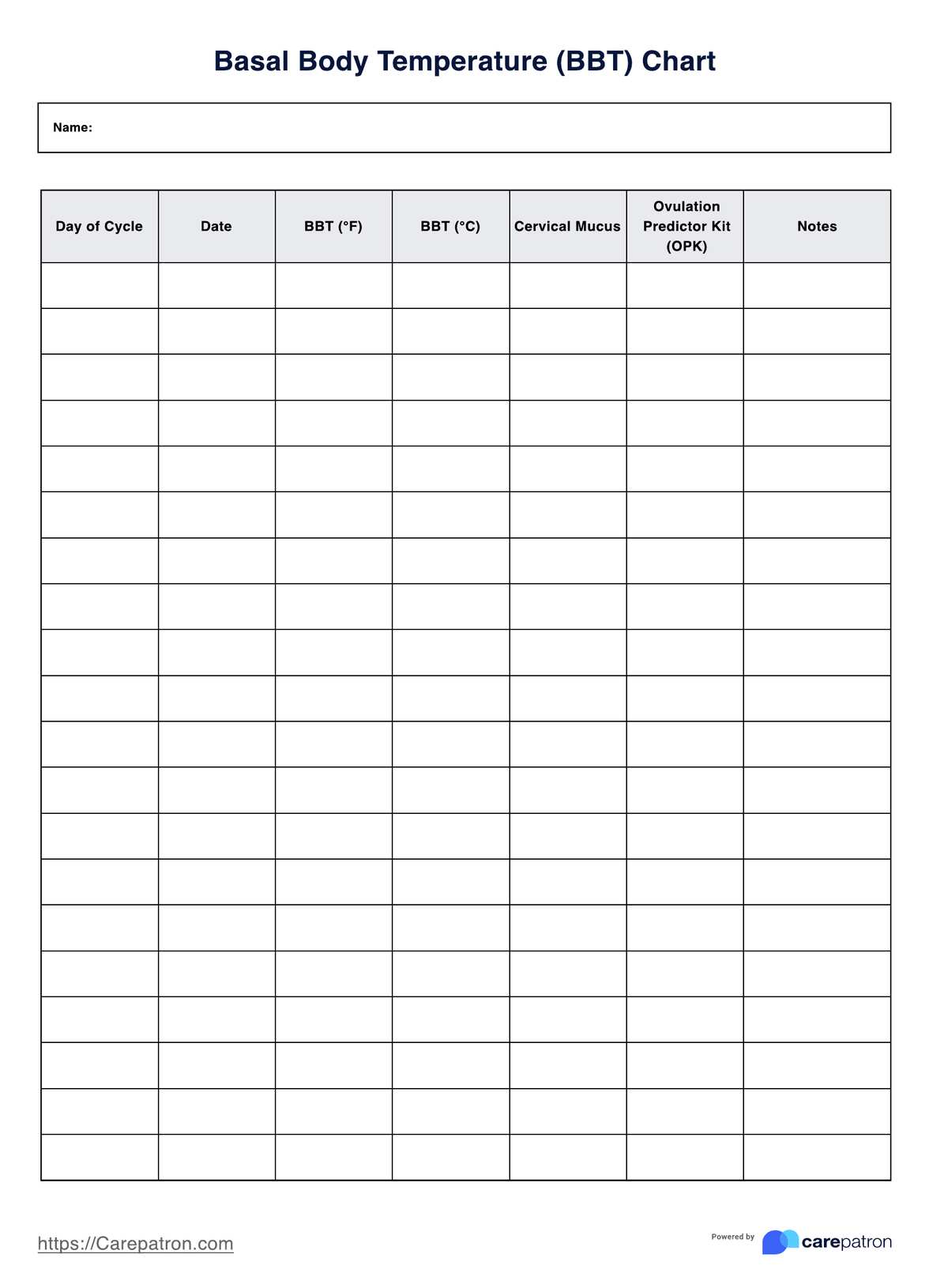BBT tracking has been around for decades, with various charts and apps developed by fertility specialists, reproductive health experts, and app developers.

Basal Body Temperature Chart
Learn how to track fertility using a Basal Body Temperature Chart. Download our free PDF today!
Use Template
Basal Body Temperature Chart Template
Commonly asked questions
Follow the step-by-step guide in this article to fill out and interpret the Basal Body Temperature Chart accurately.
Look for patterns, such as a sustained increase in BBT after ovulation and changes in cervical mucus consistency, to determine your fertile window.
EHR and practice management software
Get started for free
*No credit card required
Free
$0/usd
Unlimited clients
Telehealth
1GB of storage
Client portal text
Automated billing and online payments











